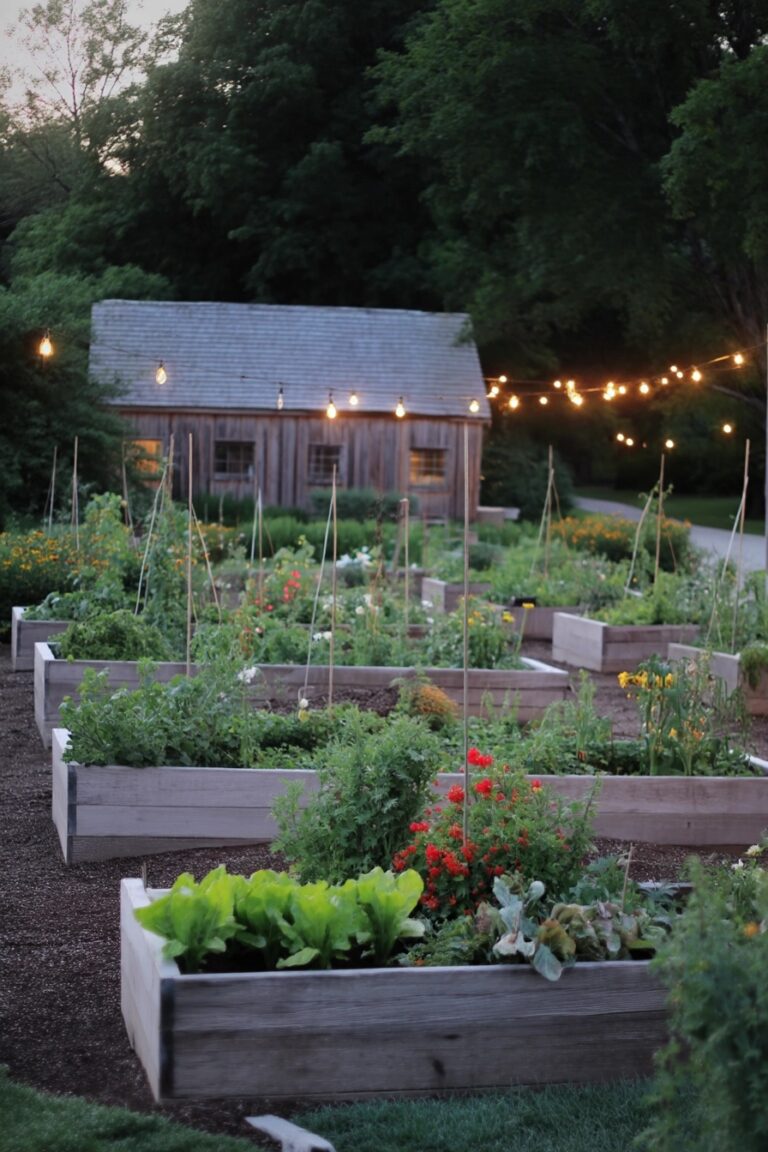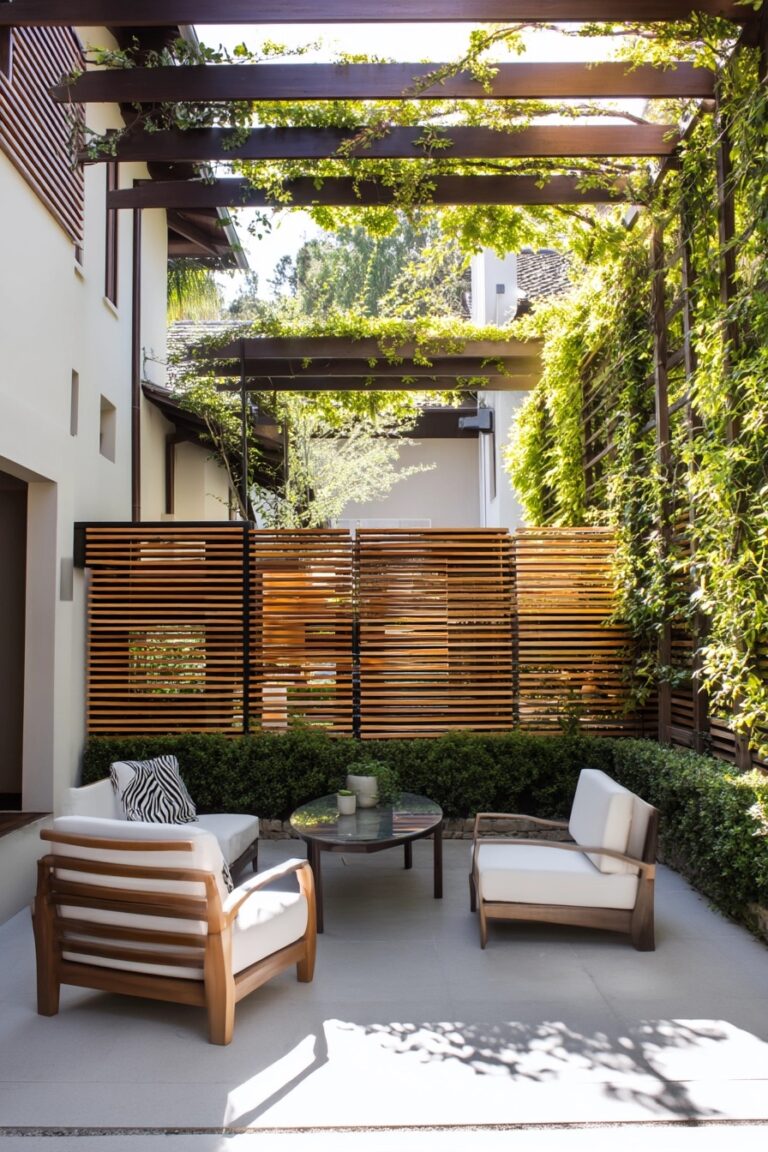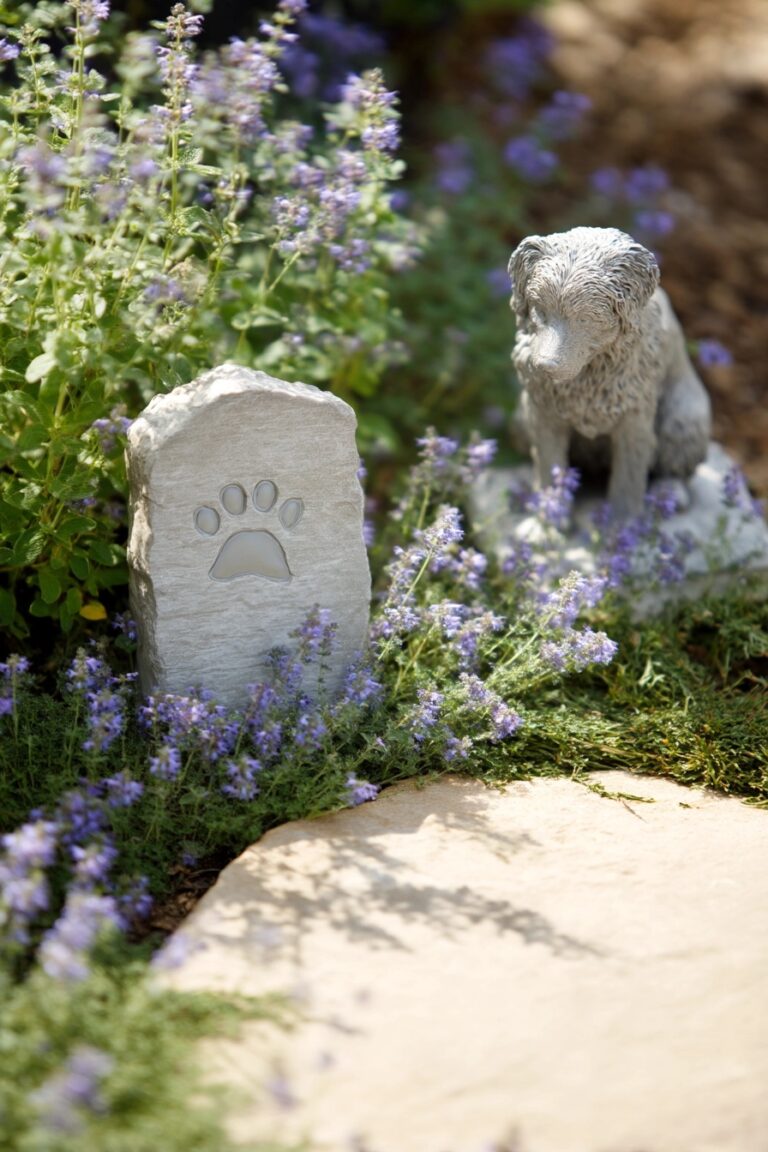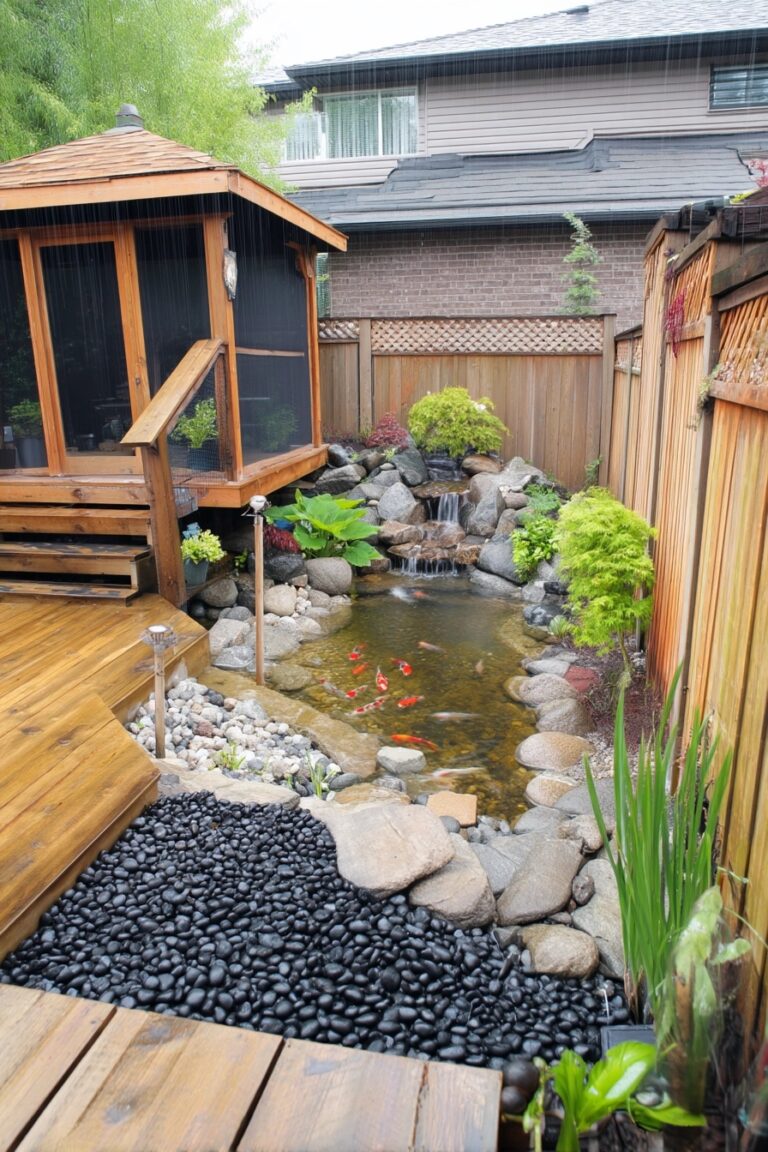Ever feel like your small backyard or patio is just… there? I used to feel the same way, dreaming of those peaceful Japanese gardens but thinking I lacked the space. But guess what? Creating a serene Zen escape is totally possible, even in tiny areas! Let’s explore some simple and beautiful small Japanese garden ideas together and bring that calm right to your doorstep.
11 Inspiring Small Japanese Garden Ideas for a Tranquil Zen Escape
1. Enchanting Japanese Courtyard Garden Transformation Idea.

This image showcases how even a narrow urban courtyard, surrounded by buildings, can become a serene Japanese-style retreat. The use of light gravel, clean stepping stones, vertical bamboo, and a simple water feature transforms the limited area into a peaceful escape.
Seriously, look at this transformation! It’s proof positive that you don’t need sprawling acres to capture the essence of a Japanese garden. This urban courtyard feels miles away from the city hustle, doesn’t it? The key here is embracing the vertical space with slender bamboo and keeping the ground plane simple and clean. The contrast between the natural elements (plants, stone, water) and the surrounding architecture actually enhances the feeling of a hidden sanctuary. I love how the pale gravel brightens the space, making it feel larger, while the carefully placed square pavers create a clear, meditative path. It’s a masterclass in maximizing a small, potentially awkward space!
2. Step into Serenity: Designing Tiny Winding Pathways.

A gently curving path invites exploration and adds a sense of mystery, even in a small garden. Flanked by lush plantings like Japanese maples and mossy stones, this gravel path leads the eye towards a focal point, creating depth and intrigue.
There’s something inherently calming about a path that doesn’t rush you, right? Straight lines can feel efficient, but a winding path like this encourages you to slow down, pause, and appreciate the details. In a small Japanese garden, this is pure genius! It makes the space feel much larger and more interesting than a direct route would. Notice how the planting varies along the edges – the vibrant red maple, the sculptural pine, the soft moss, and delicate ferns. It feels like a miniature journey through a natural landscape. Using fine gravel for the path provides that satisfying crunch underfoot and contrasts beautifully with the greenery.
3. Lantern Light Glow: Adding Atmosphere After Dark.
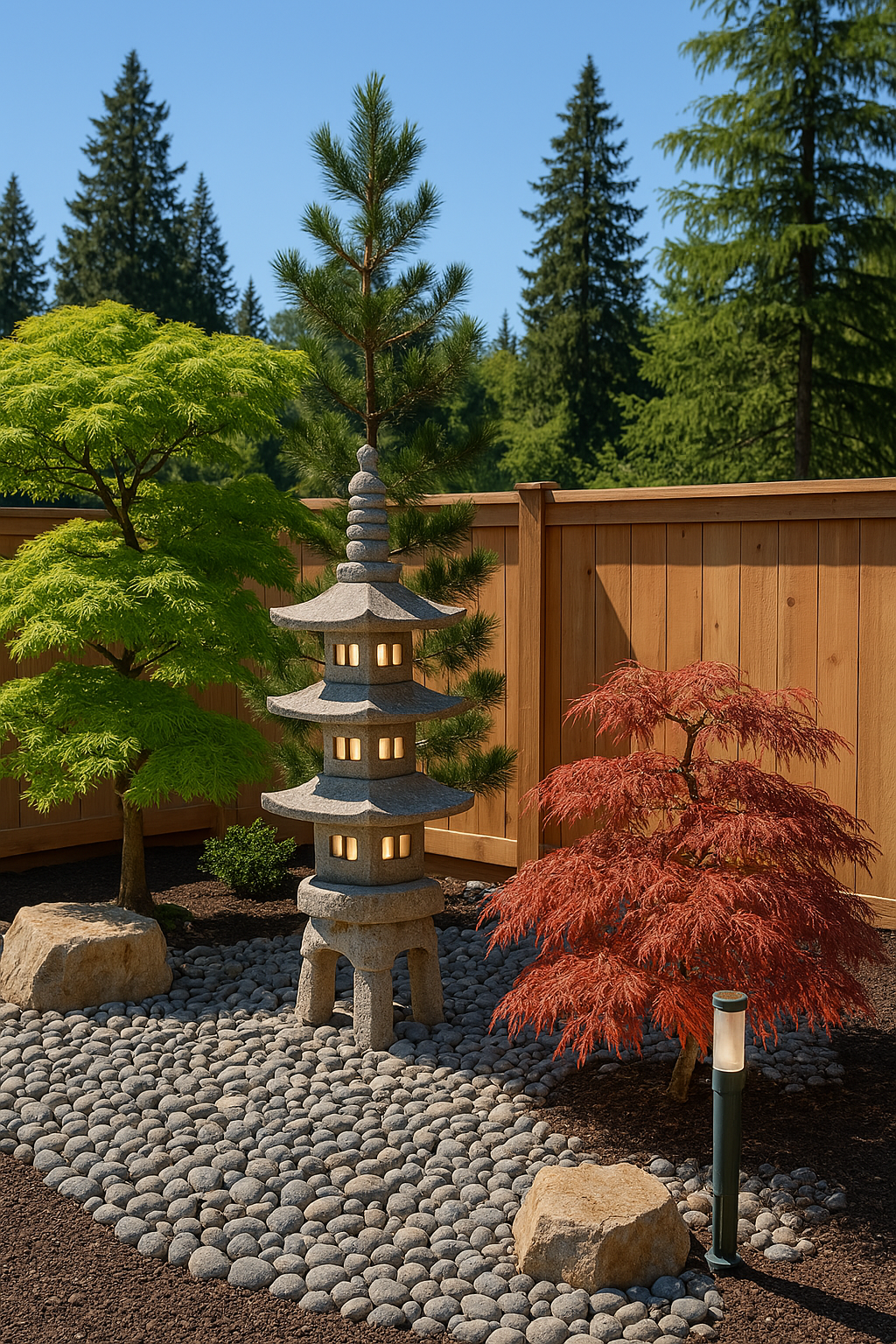
A traditional stone lantern (toro) adds an essential element of Japanese garden design. When lit, it casts a soft, inviting glow, transforming the garden into a magical space perfect for evening contemplation or enjoyment.
Don’t forget about how your garden looks after the sun goes down! Adding a traditional stone lantern, or ‘toro’, is one of my favorite small Japanese garden ideas. It’s not just about illumination; it’s about creating *atmosphere*. Look how the soft light spills onto the smooth river stones and highlights the delicate leaves of the maples. It adds such warmth and a touch of mystery. Even during the day, the lantern serves as a beautiful sculptural element. Placing it near a focal point, like these gorgeous maples, or along a pathway helps anchor the design and provides that authentic Japanese garden feel.
4. Less is More: Minimalist Japanese Yard Styling Secrets.

This minimalist Japanese yard demonstrates the principle of ‘kanso’ (simplicity). Clean lines, uncluttered space, carefully chosen elements like gravel, pavers, and a single striking tree create a profoundly calming and modern aesthetic.
Sometimes, the most impactful designs are the simplest. This front yard perfectly captures the minimalist spirit often found in Japanese aesthetics. Instead of packing it full of plants, the focus is on clean lines, contrasting textures (smooth pavers vs. rough gravel), and the beauty of empty space (known as ‘ma’). The single, elegantly shaped tree becomes a living sculpture, drawing the eye without overwhelming the scene. This approach is fantastic for small spaces because it avoids visual clutter, making the area feel open, serene, and incredibly sophisticated. It’s about carefully curating each element for maximum impact.
5. Miniature Japanese Rock Garden Magic: Perfect Zen for Patios.
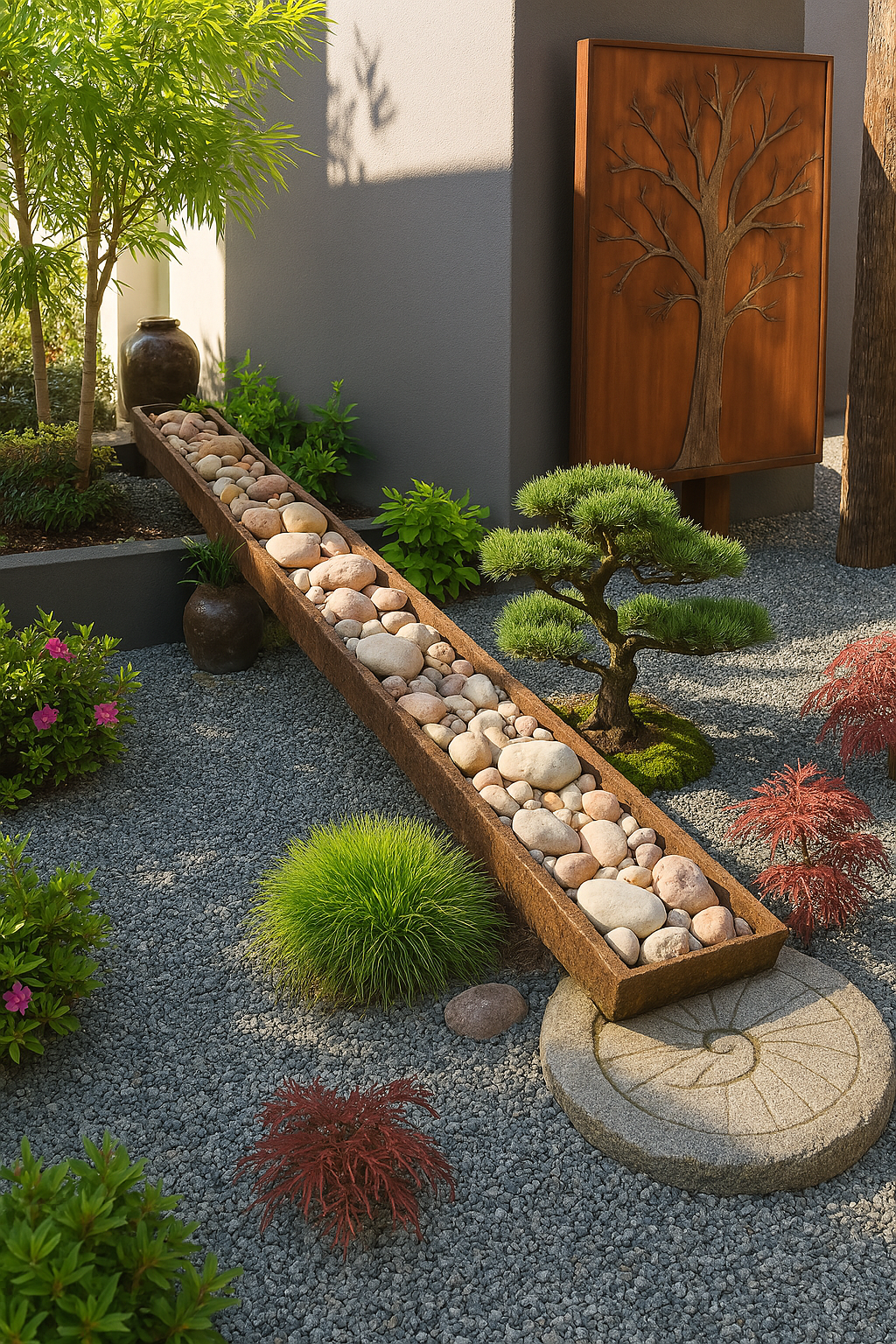
Get creative with your Japanese rock garden (Karesansui) elements! This long, low trough filled with smooth stones acts as a dry river bed (‘nagare’), adding a unique focal point and texture to the gravel ground cover, perfectly suited for a patio or small area.
Who says a Japanese rock garden needs acres of sand? This idea is brilliant for patios or really tight spots! Using a trough like this creates a defined, contained ‘dry landscape’ feature. It mimics a riverbed or a symbolic element within the larger (but still small!) garden space. I love the contrast between the smooth, larger river stones inside the trough and the finer gravel surrounding it. Paired with miniature maples and pruned shrubs that evoke a bonsai feel, it’s a concentrated dose of Zen magic. It shows you can play with traditional concepts on a smaller, more manageable scale and still achieve that peaceful, meditative quality.
6. Moss & Stone Harmony: Classic Small Garden Textures.

The interplay of textures is vital in Japanese gardens. This image highlights the soft, velvety mounds of moss contrasting beautifully with rough-textured stepping stones and fine gravel, creating a rich visual and tactile experience.
Oh, the textures! This is where small Japanese gardens truly shine for me. Getting up close, you can really appreciate the incredible detail. Look at that vibrant green moss – it looks like velvet, doesn’t it? Mounding it up like this creates soft contours that contrast perfectly with the hard, flat surfaces of the stepping stones and the rougher texture of the gravel. Adding small, carefully placed plants like the miniature grasses and that little red maple just enhances the feeling of a miniature, ancient landscape. Focusing on these textural combinations is a fantastic way to add depth and interest to a compact space without needing lots of different plant species.
7. Tiny Tranquility: A Simple Water Feature Idea.
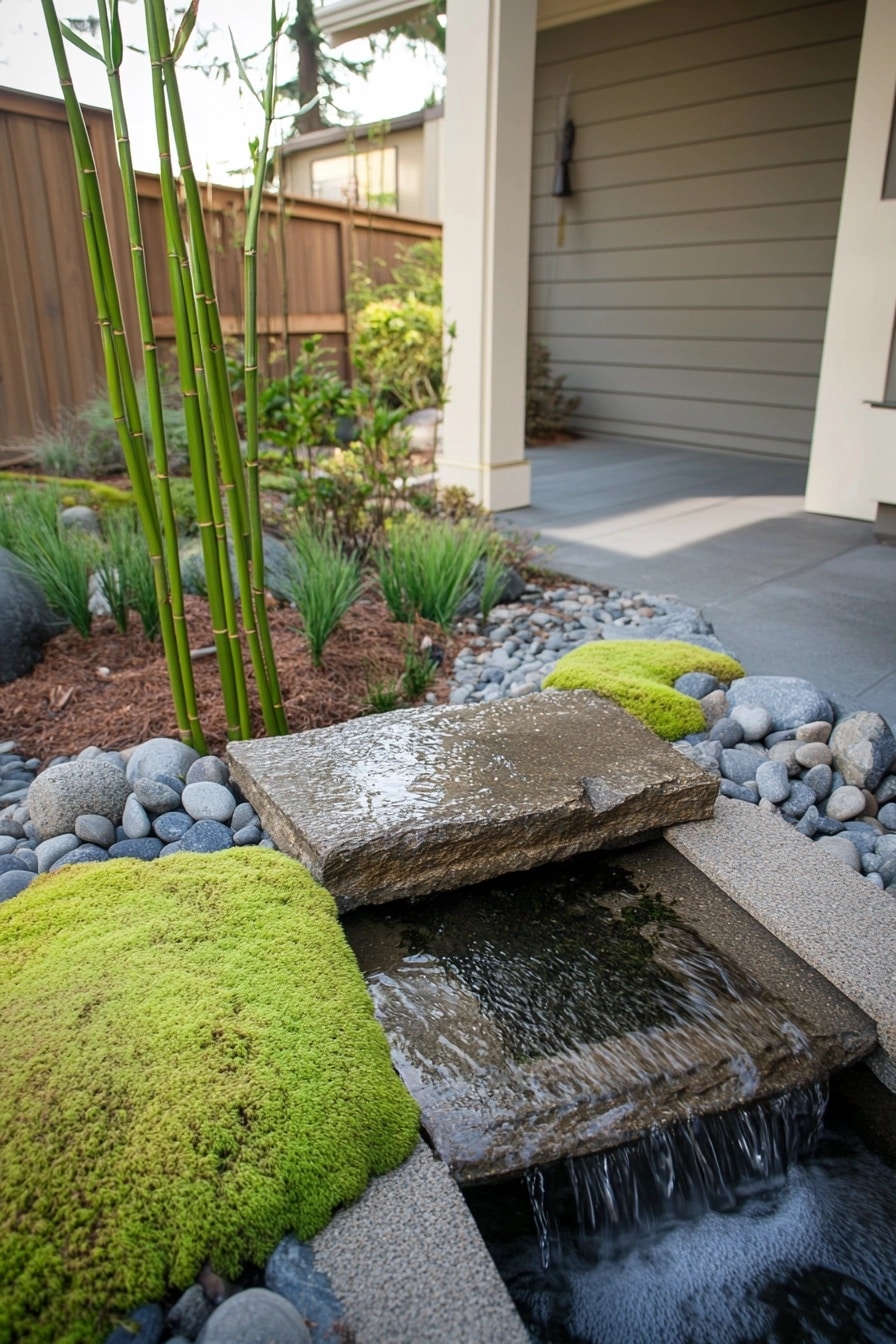
Even a small, simple waterfall feature crafted from stone slabs brings the vital element of water and its calming sounds into the garden. Surrounded by lush moss and bamboo stalks, it creates a refreshing focal point.
The sound of trickling water is instantly calming, isn’t it? Incorporating a water feature is a classic element in Japanese gardens, symbolizing purity and the flow of life. You don’t need a massive pond; something simple like this tiered stone cascade works beautifully in small spaces. It adds movement, sound, and reflects light, bringing the whole garden to life. I love how the water spills over the flat stones, creating that gentle murmur. Placing it amongst moisture-loving moss and perhaps some elegant bamboo really enhances the natural, tranquil vibe. It becomes a mini-destination within your garden, a spot to pause and listen.
8. Focal Point Charm: Using Stone Basins (Tsukubai).
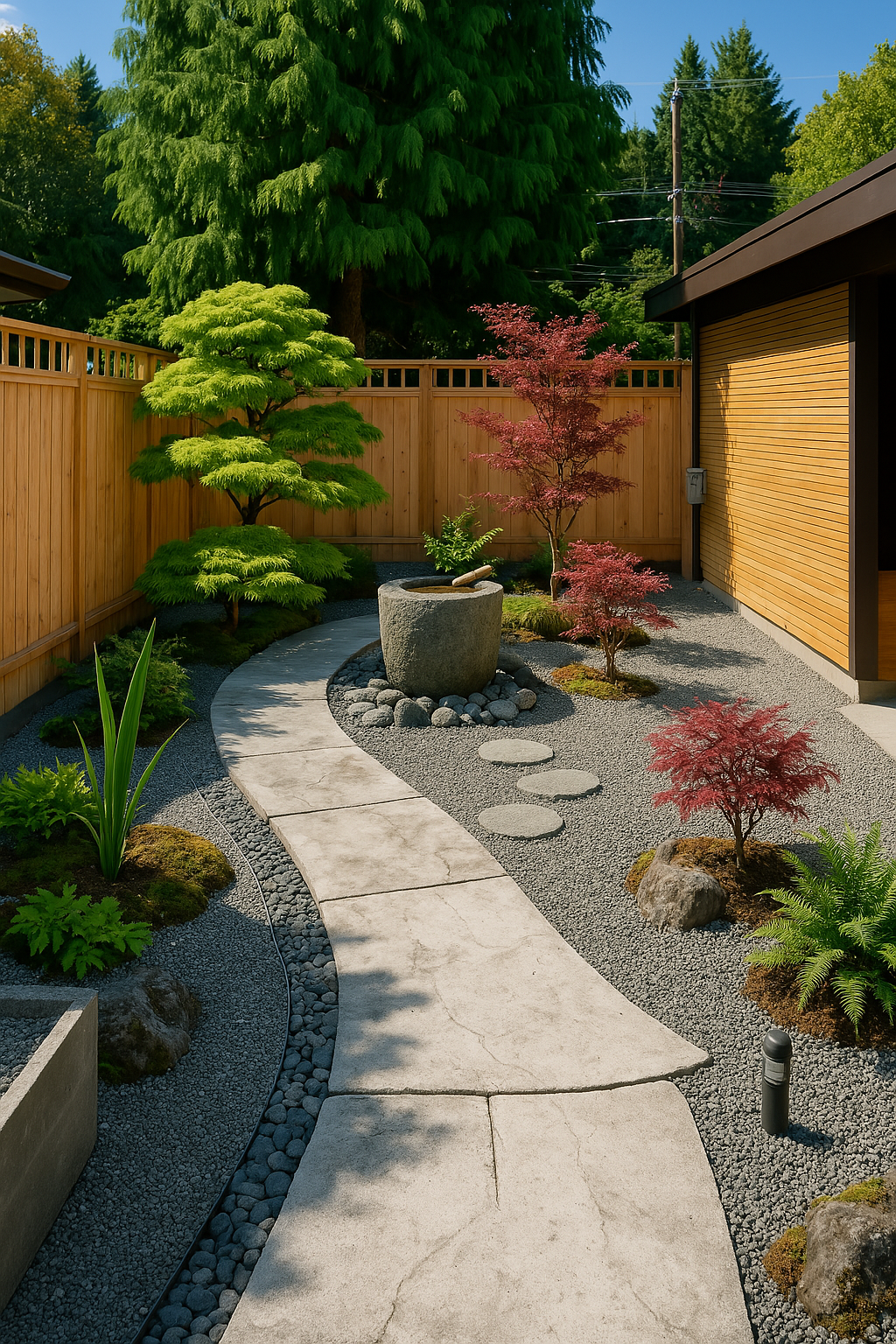
A stone water basin, or ‘tsukubai’, traditionally used for ritual purification, serves as a beautiful and meaningful focal point. Placed at the end of a path and surrounded by carefully chosen plants and gravel, it invites contemplation.
Creating a destination or a focal point is key in Japanese garden design, guiding the eye and giving the space purpose. This image beautifully illustrates the use of a ‘tsukubai’, a traditional stone basin. While historically used for cleansing hands before a tea ceremony, they make stunning features in any small garden. The curved path naturally leads you towards it, making its discovery feel intentional. Surrounded by meticulously placed gravel, shapely maples, and soft ferns, the basin feels both grounded and significant. It adds an element of history and ritual, elevating the garden beyond just pretty plants.
9. Zen Balcony Bliss: Creating Your Urban Escape.

No ground space? No problem! This charming setup shows how a balcony or even a deep windowsill can host a miniature Japanese garden, using containers, gravel, bamboo, and symbolic elements like a small lantern.
Living in an apartment doesn’t mean you have to miss out on having your own little Zen corner! This is such a clever and inspiring use of balcony space. Creating a contained garden bed, even a shallow one like this on a windowsill, allows you to bring in those essential elements. Fine gravel provides the base, slender bamboo adds height without taking up much room, a smooth stone provides asymmetry, and the miniature lantern adds that perfect symbolic touch. It’s like a tiny world overlooking the city – your personal escape hatch to tranquility. Using containers is the ultimate solution for renters or those with only paved outdoor areas.
10. Vertical Views: Bamboo Screens & Climbing Greens.
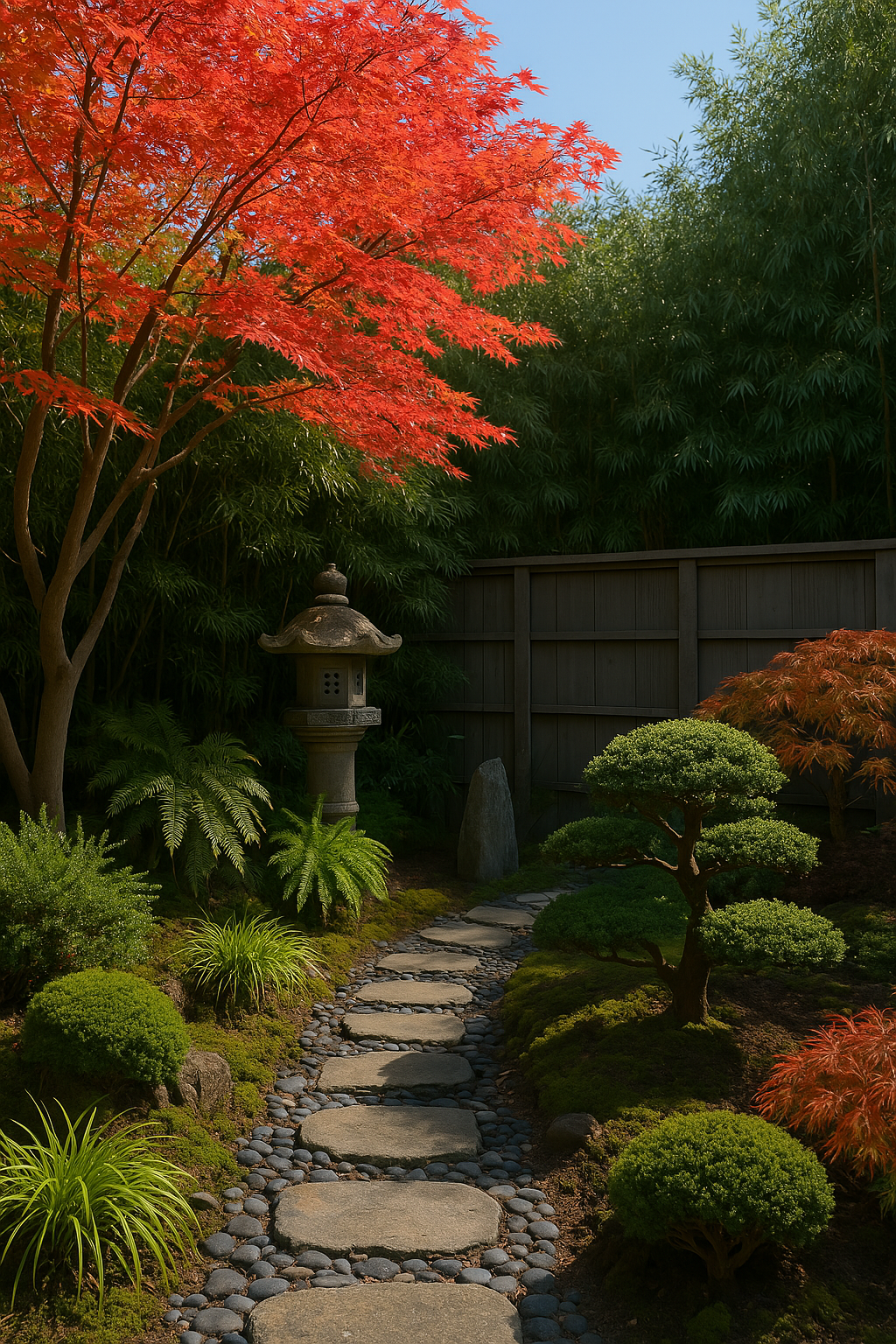
In small gardens, think vertically! Tall, slender bamboo groves create natural screens for privacy, add height and drama, and their rustling leaves provide soothing sounds. They work wonderfully against fences or walls.
When floor space is limited, look up! Using vertical elements is crucial for making a small garden feel more expansive and providing privacy. Bamboo is a fantastic choice – it grows tall and relatively narrow, creating a living screen. Look how effectively it’s used here against the wooden fence; it softens the boundary and draws the eye upward. The dense foliage creates a lush backdrop for other garden elements, like the shapely pines and maples in the foreground. Plus, the sound of wind rustling through bamboo leaves? Pure bliss! Just be sure to choose a clumping variety or use root barriers to keep it contained in smaller gardens.
11. Small Space, Big Impact: The Power of a Single Statement Rock.
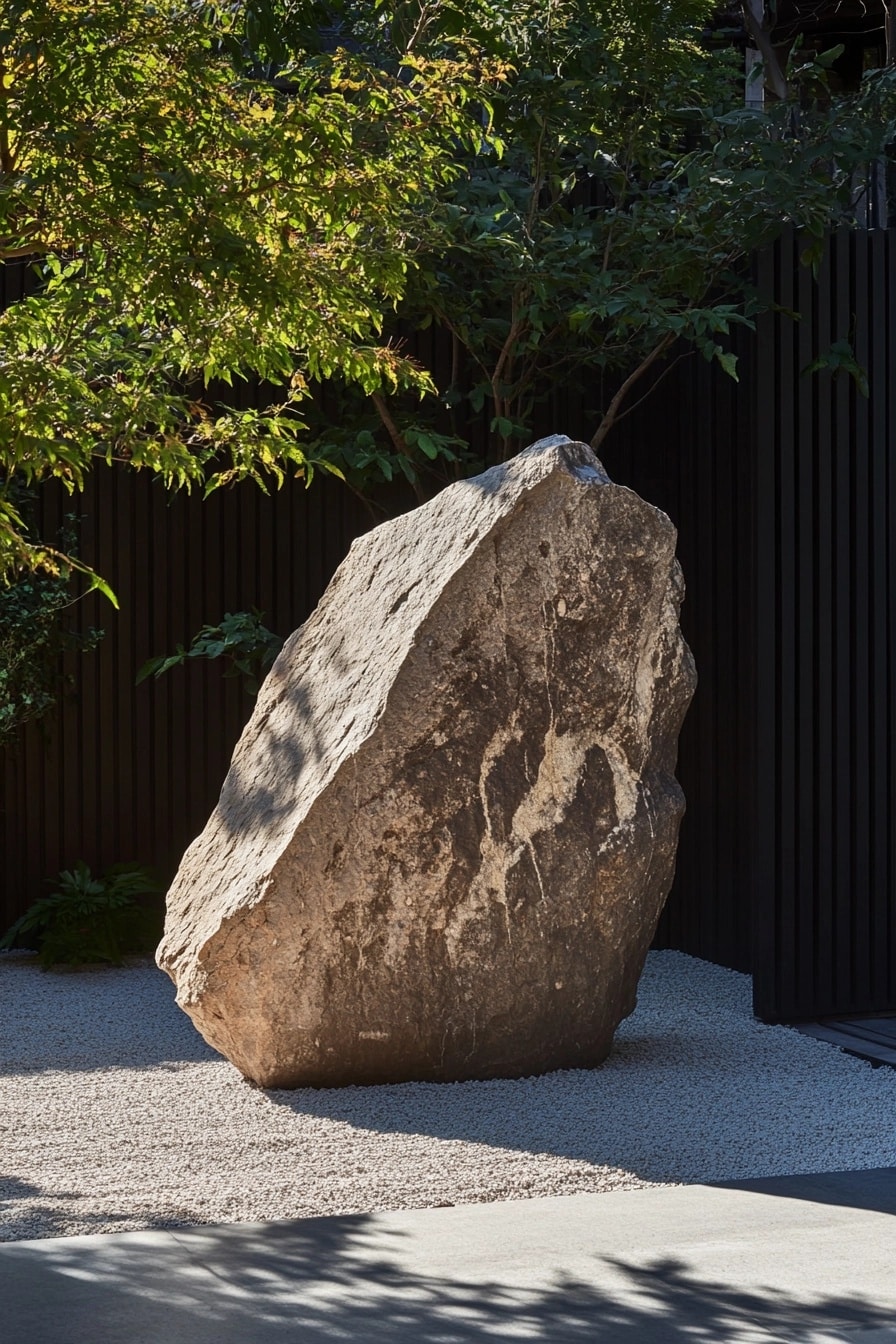
Sometimes, one perfectly chosen element can define the entire space. This large, characterful rock (‘ishi’) acts as a powerful anchor and sculptural focal point in this minimalist garden, proving less can be truly more.
Never underestimate the power of a single, incredible rock! In Japanese garden design, stones (‘ishi’) are fundamental, often representing mountains or islands. Instead of scattering many small stones, choosing one large, uniquely shaped, or beautifully weathered rock can create immense impact, especially in a small area. Look how this rock commands attention against the simple backdrop of fine gravel and the dark fence. It has presence, texture, and a sense of permanence. Surrounding it with mostly open space emphasizes its importance and creates a profoundly calming, uncluttered feel. It’s a bold move that pays off in serene sophistication.
- FAQ:
- Q: What are the key elements for a simple small Japanese garden?
A: Focus on minimalism and natural harmony. Essential elements include carefully chosen rocks (ishi), water features (or symbolic gravel/sand), appropriate plants like moss or ferns, and perhaps a stone lantern, emphasizing asymmetry and tranquility. - Q: How can I create a Japanese rock garden (Zen garden) effect in a limited space?
A: Japanese rock gardens (Karesansui) are perfect for small areas! Use raked sand or fine gravel to represent water and strategically place a few larger stones to symbolize mountains or islands. Keep planting minimal to maintain focus and serenity. - Q: What principles guide Japanese garden design ideas for a small backyard or courtyard?
A: Core principles include creating a sense of naturalism (shizen), simplicity (kanso), asymmetry (fukinsei), and tranquility. Even in small yards or courtyards, the aim is to evoke a larger natural scene and provide a space for peaceful contemplation.
- Q: What are the key elements for a simple small Japanese garden?
